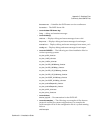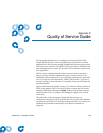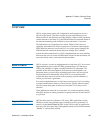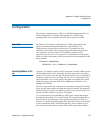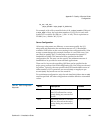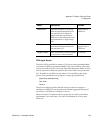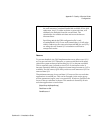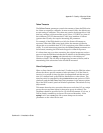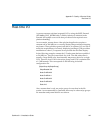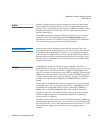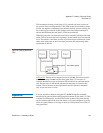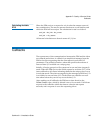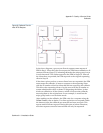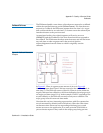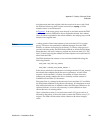Appendix D Quality of Service Guide
Configuration
StorNext 3.1.3 Installation Guide 141
Token Timeouts 4
The RtTokenTimeout parameter controls the amount of time the FSM waits
for clients to respond to callbacks. In most normal SANs, the default two-
second setting is sufficient. This value may need to be changed for a SAN
that has a mixture of client machine types (Linux, NT, IRIX, etc.) that all
have different TCP/IP characteristics. Also, large numbers of clients
(greater than 32) may also require increasing the parameter.
For example, if the FSM should ever fail, the clients will attempt to
reconnect. When the FSM comes back online, the amount of time the
clients take to re-establish their TCP/IP connection to the FSM can differ
wildly. To avoid unnecessary timeouts, the
RtTokenTimeout parameter can
be increased, meaning the FSM waits longer for callback responses.
If a client times out on a token retraction, the original requestor receives
an error from the FSM that includes the IP address of the offending client.
This error is logged to
syslog, and alternatively to the desktop on
Windows clients. This can help in diagnosing reconnect failures, and in
determining if the token time value should be increased.
Client Configuration 4
When a client obtains a non-real-time I/O token from the FSM, the token
allows the client a specific amount of non-real-time I/O. If the client is
inactive for a period of time, the token is relinquished and the non-real-
time I/O released back to the FSM for distribution to other clients. The
timeout period is controlled by the
nrtiotokenhold mount option on UNIX
platforms, and the
QOS Token Hold Time parameter in the mount options
tab of the SNFS control panel on Windows platforms. The default is sixty
(60) seconds.
This means that after sixty seconds without non-real-time I/O on a stripe
group, the non-real-time token for that stripe group is released. The
parameter should be specified in five (5) second increments. If it is not, it
will be silently rounded up to the next five-second boundary. If the
syslog level is set to debug, the file system dumps out its mount
parameters so the value can be seen.



